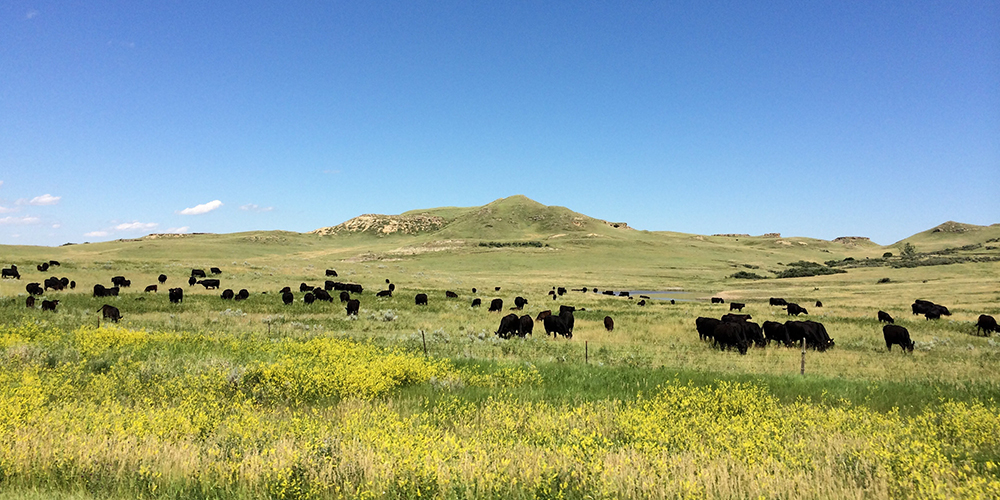Specialist Assistance: Bagley Risk Management Techniques
Wiki Article
Recognizing Livestock Danger Protection (LRP) Insurance Coverage: A Comprehensive Guide
Browsing the realm of animals danger security (LRP) insurance policy can be a complicated undertaking for many in the agricultural industry. From just how LRP insurance coverage operates to the various protection alternatives offered, there is much to uncover in this extensive overview that can potentially form the way animals producers come close to risk management in their services.

Exactly How LRP Insurance Works
Periodically, understanding the auto mechanics of Animals Threat Security (LRP) insurance policy can be intricate, yet breaking down exactly how it works can give clearness for farmers and ranchers. LRP insurance coverage is a threat monitoring device created to shield animals manufacturers versus unexpected rate decreases. The plan permits manufacturers to set an insurance coverage level based upon their details demands, picking the number of head, weight range, and insurance coverage cost. As soon as the policy is in location, if market costs fall listed below the insurance coverage rate, manufacturers can file an insurance claim for the difference. It is very important to note that LRP insurance coverage is not a revenue guarantee; rather, it focuses solely on rate danger protection. The coverage period normally ranges from 13 to 52 weeks, supplying flexibility for manufacturers to choose a period that aligns with their production cycle. By utilizing LRP insurance coverage, ranchers and farmers can reduce the financial dangers related to rising and fall market rates, guaranteeing higher stability in their procedures.Qualification and Insurance Coverage Options

When it comes to protection choices, LRP insurance policy provides producers the versatility to select the protection degree, coverage period, and recommendations that ideal fit their threat monitoring demands. By recognizing the qualification requirements and protection choices readily available, livestock manufacturers can make enlightened decisions to take care of threat successfully.
Advantages And Disadvantages of LRP Insurance Policy
When reviewing Animals Risk Protection (LRP) insurance, it is necessary for animals manufacturers to evaluate the disadvantages and benefits inherent in this threat monitoring tool.
One of the primary advantages of LRP insurance policy is its ability to give defense versus a decline in animals prices. In addition, LRP insurance offers a degree of versatility, allowing producers to tailor insurance coverage degrees and plan durations to suit their particular demands.
Nevertheless, there are also some drawbacks to consider. One restriction of LRP insurance policy is that it does not protect against all kinds of dangers, such as disease outbreaks or natural disasters. In addition, costs can often be expensive, especially for producers with large animals herds. It is vital for manufacturers to meticulously assess their individual threat direct exposure and economic scenario to determine if LRP insurance coverage is the right threat administration tool find more for their procedure.
Recognizing LRP Insurance Policy Premiums

Tips for Maximizing LRP Advantages
Making the most of the advantages of Animals click for more info Risk Security (LRP) insurance policy requires calculated preparation and aggressive threat management - Bagley Risk Management. To make the most of your LRP protection, consider the adhering to ideas:Consistently Evaluate Market Conditions: Stay notified regarding market patterns and cost variations in the livestock industry. By keeping track of these factors, you can make educated decisions about when to buy LRP coverage to safeguard against potential losses.
Set Realistic Insurance Coverage Levels: When picking insurance coverage levels, consider your manufacturing costs, market price of livestock, and potential risks - Bagley Risk Management. Setting realistic insurance coverage levels visit this page makes certain that you are effectively safeguarded without paying too much for unnecessary insurance policy
Expand Your Coverage: As opposed to counting exclusively on LRP insurance, take into consideration expanding your danger administration methods. Incorporating LRP with various other threat administration tools such as futures contracts or options can give thorough coverage versus market uncertainties.
Testimonial and Readjust Protection Regularly: As market problems change, regularly evaluate your LRP protection to ensure it straightens with your present threat direct exposure. Adjusting coverage levels and timing of acquisitions can help optimize your danger security approach. By following these ideas, you can make best use of the benefits of LRP insurance policy and guard your animals procedure against unforeseen dangers.
Verdict
Finally, animals threat defense (LRP) insurance coverage is a beneficial tool for farmers to manage the financial threats related to their livestock operations. By understanding exactly how LRP works, eligibility and coverage alternatives, in addition to the advantages and disadvantages of this insurance coverage, farmers can make informed decisions to shield their resources. By carefully thinking about LRP costs and carrying out techniques to maximize benefits, farmers can alleviate prospective losses and make sure the sustainability of their procedures.
Livestock producers interested in obtaining Animals Risk Security (LRP) insurance coverage can explore a variety of eligibility criteria and coverage alternatives tailored to their particular animals operations.When it comes to insurance coverage alternatives, LRP insurance coverage offers manufacturers the versatility to choose the protection level, coverage period, and endorsements that ideal fit their danger management requirements.To realize the details of Animals Threat Security (LRP) insurance totally, understanding the elements influencing LRP insurance policy premiums is essential. LRP insurance costs are figured out by different aspects, consisting of the coverage level chosen, the anticipated rate of livestock at the end of the insurance coverage period, the type of livestock being guaranteed, and the length of the coverage period.Evaluation and Readjust Coverage Routinely: As market conditions transform, regularly assess your LRP coverage to guarantee it straightens with your current risk exposure.
Report this wiki page